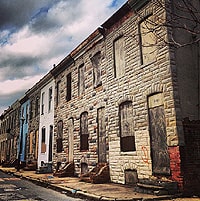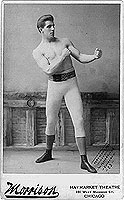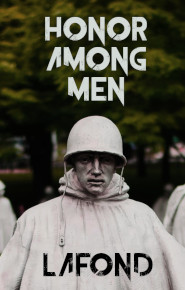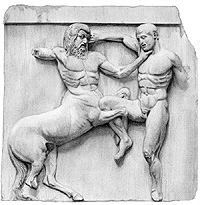Okay, Ed, let me look at this from the point of shipment, as the methods for acquiring a slave are universally cruel and varied: war, betrayal, kidnapping [a term that comes from Scotland, not Africa, and was used by escaped black slaves and freed men to describe the activities of slave hunters and slave catcher], unjust poor laws, and trickery.
I will also limit the discussion to slaves held in north America by English masters, not by Amish, Quaker, French, Swedish, Dutch, Cherokee or Seminole masters.
Shipment
Passage aboard a slave ship sailing from West Africa was better than passage aboard a cargo ship sailing out of England. As brutal as the lock system was on the slave ships, the bodies were not stacked on top of each other. English slaves were shackled from neck to ankles, and then stacked on top of each other in the hold of a ship, that was not designed to carry people, often beneath the hooves and dripping asses of horses and cattle. English slaves were beaten more often by the crew, than were blacks, because the crew could understand the insults and back talk coming from the hold. Mortality was around 25% for black and white slaves, with sailors often demanding to throw one healthy old person over out of each batch, just in case they were a witch. Casualties in some white slave ships were as high as 80%, which was unusual, and seemed to have to do with a high degree of pre-existing illness among the malnourished children kidnapped in the British isles.
In this case, it was marginally worse to be white.
Terms
Whites were always sold with a term, ranging from 3 to 31 years and seeming to average between 7 and 14. Although blacks were sometimes bonded out in this way, they were usually sentenced to life.
In this case it was worse to be black.
Liberty
Neither black or white poor, bond or free, were free to meet in groups or travel without a "slave pass" or freedom papers on them. Poor whites up until 1800 and poor blacks and mixed-race people up until the 1860s, had to live in fear of being captured and sold into slavery if caught without freedom papers, or, perhaps if their freedom papers were dropped in the mud by the kidnapper examining them on the side of the road.
There was no difference here. The only people safe from enslavement in America, before 1776 or as late as 1798, were wealthy land owners and their sons.
Tasks
Whites were used to clear land as lumber jacks, to fight Indians, and also to catch the bails of cotton thrown down in the ship's hold by the blacks above. With the exception of a few hundred blacks armed and used as militia and slave catchers against renegade white slaves in Virginia and the Carolinas, black slaves were not expected to fight wars. Also, since they cost more than whites by as much as four times, they were given safer tasks. White women were also not employed as household slaves, but all made to work in the fields, because the Mistress of the house was sure to know when her husband had impregnated a white slave girl, but less certain of the parentage of a black slave girl's babies.
In this case, it sucked more to be white.
Food
Blacks ate better than whites for two reasons.
One, since blacks were a more expensive investment, they were sometimes fed better than white slaves, but only if the slave owner was smart, and they were often drunken idiots.
Two, the black slave was in for life, but the white slave had an expiration date. For instance, white girls were supposed to be freed at 18 so they could be married off. If you starved your white slaves and caught them stealing an apple—that was good for another year!
In this case, it definitely sucked more to be white.
Sex Life
Black female slaves were encouraged to breed, but were also often prevented from marrying, were sold away from husband and children, and were routinely raped and pimped out. They did have a lot of sex. Black women were routinely tortured by the mistress to remind her not to have sex with the slave master, or to punish her for doing so.
Only certain black men were permitted to have sex, as a reward for hard work and obedience, or in an attempt to breed a better slave. However, most black men were starved of sex, or engaged in sex clandestinely, and in fear.
White slaves were not allowed to marry, and, being held under Christian terms, were also not permitted to have sex! If a white slave woman became pregnant, her child was sold into slavery and she and her lover were sentenced to additional terms of 1 to 14 years. Also, the idea of having a servile white woman under the control of her husband, drove the slave mistress often to violence, as she whipped the slave girl for carnal sins real and imagined.
This is looking pretty even to me, but I suppose depends on where your values are. Overall, the fact that the white slave man and slave woman were treated essentially with equal severity, and the black slave woman and slave man were treated so differently, did seem to give freed whites a better balanced template for building free relationships with the opposite sex.
Punishment
The punishments dished out to all slaves were horrific and brutal and formed the cornerstone of American life and ideas of education [in this area corporal forms of punishment have been done away with, but forced drugging has not], sports training, and corrections management to this day.
However, a white slave that was near to the end of his indenture could be beaten to death, with the master losing nothing, as no masters were ever known to have been imprisoned, or to have suffered a sentence greater than not being able to buy more white slaves—for the death of their chattel. Just like in the modern military, when the man whose enlistment is up is gotten drunk and induced to reenlist, the white slave whose indenture was up would be beaten savagely toward the end of his term, in hopes that he might flee and be sentenced to up to 7 years additional servitude. A white woman would be raped to generate a damning fetus and keep her enslaved
Here again, being white was worse than being black.
Hope
The black slave had no hope, knew he would die in bondage, where the white had at least the hope of freedom, if it came after he was maimed.
It sucked worse to be black here.
Hope for Your Children
If you do not have kids, you might not understand this, but it is a big one.
Although some jurisdictions, such as Virginia decreed that the children of unwed white mothers could be sold for a 21 year term, and that the children of slave mothers of the white kind could likewise be sold, it was not the normal practice. We have the example of Quaker masters adopting out children of their white slaves, without permission. Also, these were exceptions, as evidenced by the fact that I am citing Quakers. All black children and grandchildren were to be slaves. This was the greatest cruelty of the peculiar Southern American institution of slavery in its final form. The race-based barring of Indians and black slave owners from owning whites, and the damnation of the children of black slaves to perpetual servitude, did put the white slave on a much better footing,
then his black counterpart.
In this case, the black man had it worse.
Overall, who is to say what values should be placed upon each of the above factors, let alone the specifics of certain slave masters. Some black slaves commented that "They'd rather be a niցցer than poor white trash," to such an extent that a song and a book existed under variants of that line. It is my personal feeling that the slaves who had it worst were the English children who were sold by their own parents and siblings into a life of bondage that saw 95% of them dead within seven years. There would be something about that that must have been worse than being captured in war or, kidnapped, or being born to slavery. My second pick for worst plight would be the Irish families that were shipped to Pennsylvania and sold off separately, followed by the black families that were broken up via separate sales with appalling regularity.











James,
Many of the themes you describe here - selling own children into slavery, kidnapping, risks of travelling without freedom papers, escape and evasion - are echoed in the classic children's story "The Tale of Pigling Bland" by Beatrix Potter.
I don't know if it's just a co-incidence, but if so it is quite startling.